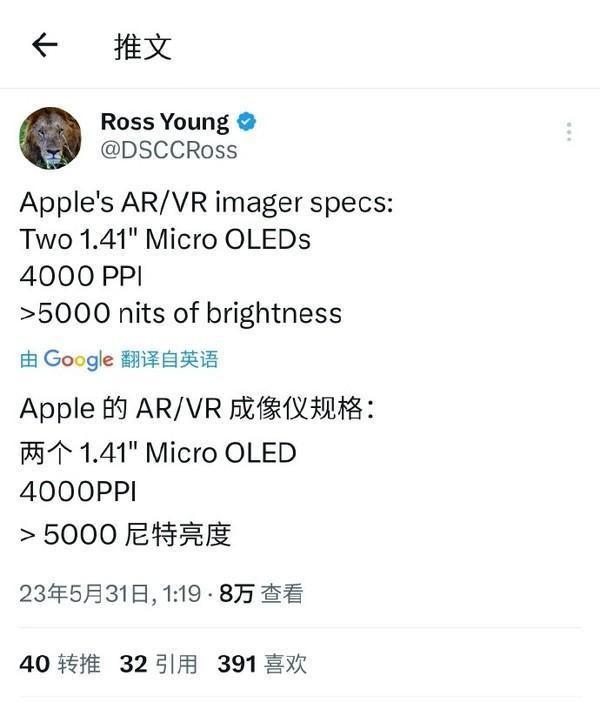Apple's First AR/VR Head Display Specification Exposure: 2 4K Screens with Amazing Peak Brightness
On May 31st, analyst Ross Young revealed the specifications of Apple's first head display, which will be equipped with two 1.4-inch MicroOLED (OLEDonSilicon) screens, each with a resolution of 4K standard, brightness exceeding 5000 nits, and screen pixel density reaching 4000 pixels per inch
On May 31st, analyst Ross Young revealed the specifications of Apple's first head display, which will be equipped with two 1.4-inch MicroOLED (OLEDonSilicon) screens, each with a resolution of 4K standard, brightness exceeding 5000 nits, and screen pixel density reaching 4000 pixels per inch.

WWDC23
The brightness of 5000 nits is a relatively exaggerated value, as few mainstream head displays currently on the market can meet this specification. The maximum brightness of MetaQuest2 is also 100 nits. This means that the screen of Apple's first head display product will have higher contrast, bringing brighter colors and better presentation effects.

Apple Head Display Specification Exposure
According to previous revelations, Apple's first head display product will be named "RealityPro", equipped with up to 15 cameras and advanced eye tracking technology, providing users with a more realistic and immersive user experience. It is reported that RealityPro will start mass production as early as June and mass production in December, with an estimated price of up to $3000. If it is a head display product from another manufacturer, it may face a chill in the market. But this is Apple's first head display, and even if the price exceeds 20000 yuan, there may be many who will pay for it.
It is worth noting that near June, before the official opening of WWDC23 on June 6th, Apple's latest promotional page featured an AR/VR Easter egg. In this way, even if Apple's first AR/VR head display is not officially launched on WWDC23, it will still be displayed to the public.
Tag: Apple First AR VR Head Display Specification Exposure 4K
Disclaimer: The content of this article is sourced from the internet. The copyright of the text, images, and other materials belongs to the original author. The platform reprints the materials for the purpose of conveying more information. The content of the article is for reference and learning only, and should not be used for commercial purposes. If it infringes on your legitimate rights and interests, please contact us promptly and we will handle it as soon as possible! We respect copyright and are committed to protecting it. Thank you for sharing.


